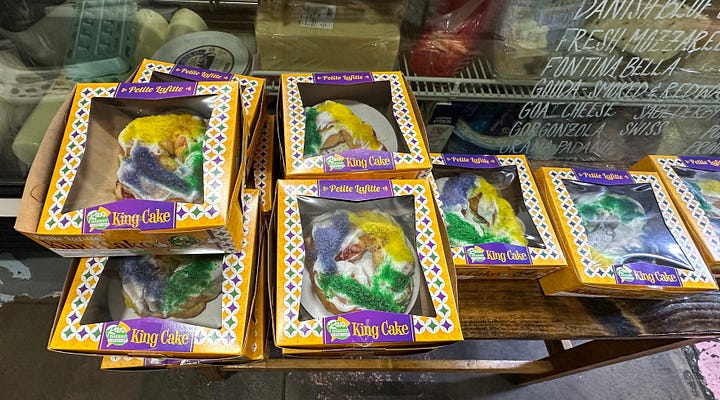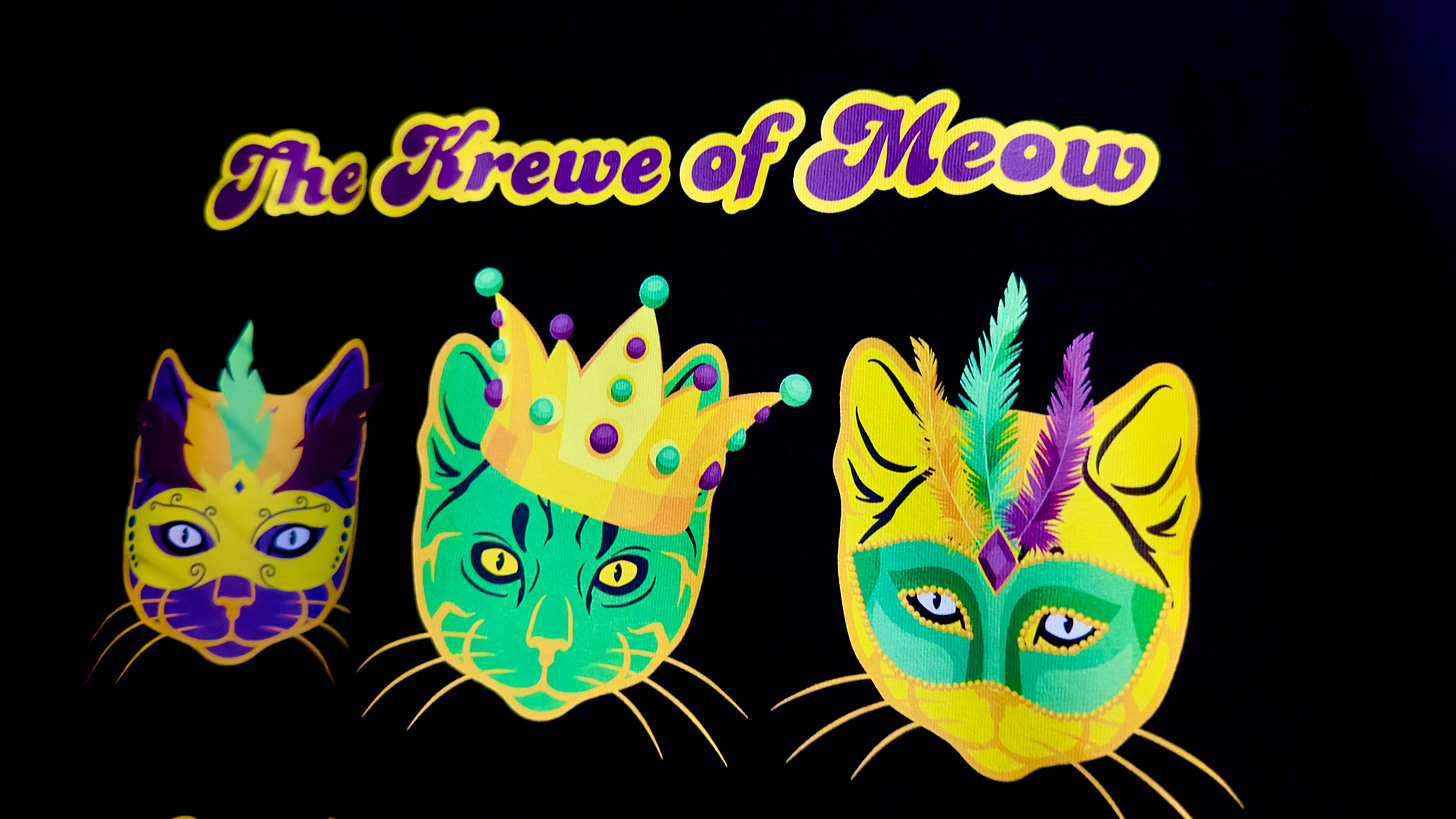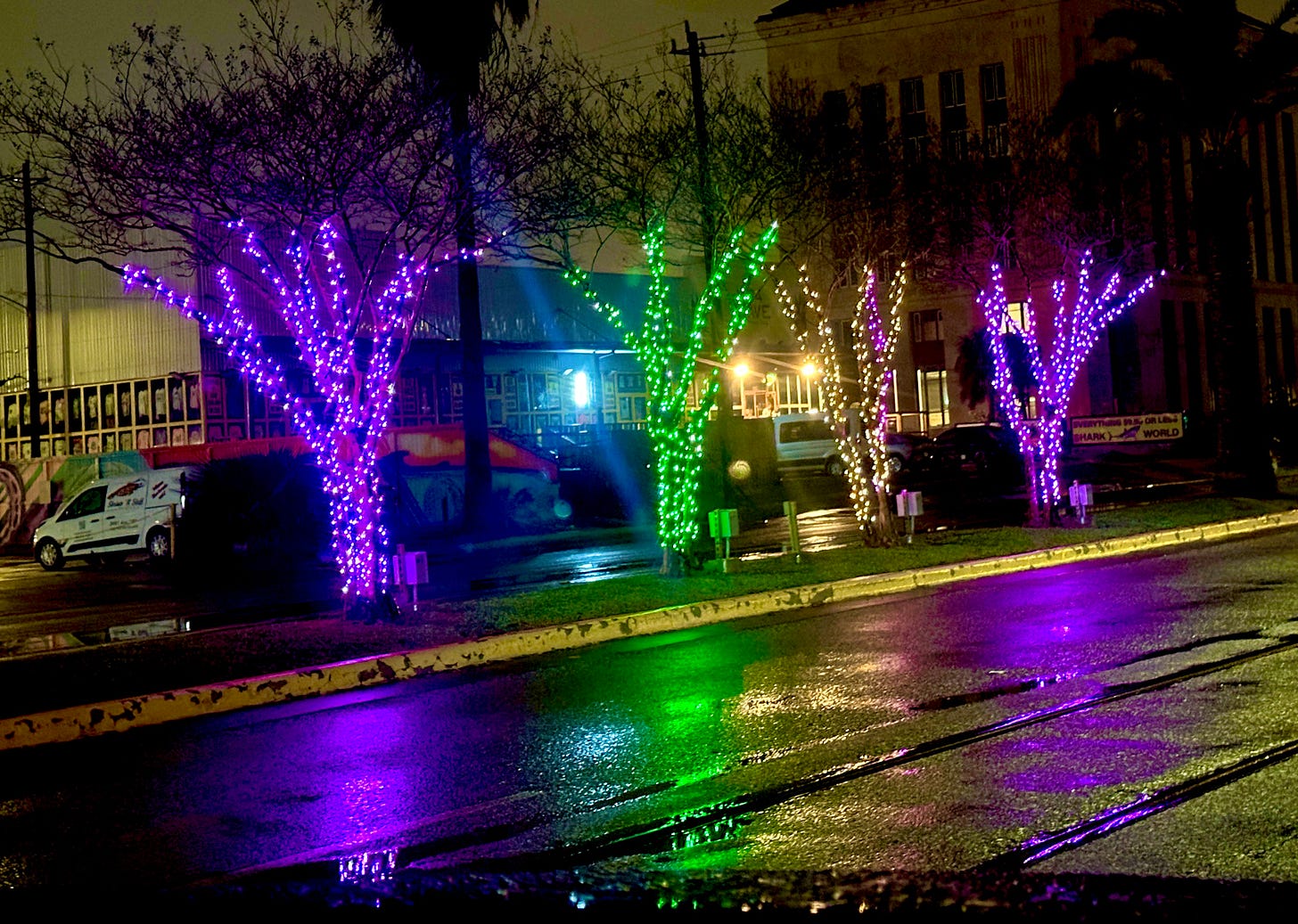Rah, Rah, Mardi Gras!
We got a preview on a recent visit to Galveston, Texas, and took the memory home
Mardi Gras has come and gone, and at least in Southern California where we live, the holiday isn’t a big deal. But that’s not the case in Galveston, Texas, which lays claim to having the country’s third largest Mardi Gras celebration (after New Orleans and Mobile, Alabama).
So even though today is the day after Mardi Gras—to be exact, for religious Christians, it’s Ash Wednesday, the beginning of Lent—I couldn’t resist sharing a few pictures and words about the joy and festivity this holiday inspires in this coastal resort town and port located on the island of Galveston, about an hour southeast of Houston.
It was pretty cold and windy when my husband Jeff and I visited last month, with warmer weather predicted in time for the crowds of visitors and locals who turn out to enjoy the parades, parties and events that happen in the two-week run-up to Mardi Gras. Sadly we left a day or two before the celebrating began, but the town was already decked out in the signature tricolor motifs of the holiday, with purple, green and gold adorning clothing, decor, shops, groceries, trees, people, pastry and candy everywhere.


Concetta Maceo Sims, the third-generation owner of Maceo Spice & Import Co., a local institution, told us that her love of Mardi Gras began when she was a little girl. Her mother came from New Orleans, and her grandmother used to make dresses for female parade-goers.
While other girls grew up playing hide-and-seek, Concetta played Mardi Gras, dressing up in costumes her grandmother made and putting miniature versions of the outfits on her Barbi dolls. When we met her, she was attired in a purple jacket, Mardi Gras T-shirt, gold earrings and gold sneakers.
“Galveston has a very similar culture as New Orleans,” she said. “We’re very community-oriented, we love our food, we love celebrating and having a good time and that's what Mardi Gras is about.”


At Concetta’s store, the counter was stacked with packages of king cakes, ring-shaped pastries topped with white icing and a generous sprinkling of purple, green and gold sugar.
The cake is a must for many here during the Carnival season leading up to Lent. It’s traditionally made of a yeast-raised dough flavored with cinnamon and filled with cream cheese and sometimes jam or nuts. Usually buried inside is a little plastic baby. Whoever finds the baby is tasked with hosting the party the following year! You can read more about the tradition of king cakes here.
Everywhere we went in Galveston we saw what looked to be Christmas trees decorated with masks, beads, baubles, ribbons, masks, feathers and other glitz sporting the purples, golds and greens of Mardi Gras. Apparently it’s a long tradition, among “Islanders.” A 2021 article in the Galveston Monthly Magazine describes the “glitzy, gaudy symbols of Mardi Gras madness” that start appearing everywhere:
“Mardi Gras celebrations officially start on the twelfth night after Christmas which fall on January 6, which is about the time most people are taking down their Christmas trees. By repurposing the tree for the season of parties and parades, its life can be extended right through Fat Tuesday.”

I’ve included some more Mardi Gras photos below and a video from Jeff. I’ll be back on Sunday with more about this fascinating island town, including an interview with Juan the Taffy Man as he turns a 40-pound block of sticky stuff into 3,000 pieces of wrapped candy!
Thanks for reading, commenting, sharing and subscribing.
See you soon!
Ruth









This whole post was fascinating, but I was particularly interested to read about the King cake with purple baby hidden in it. I'm sure you are familiar with the King cake (galette des rois) they make in France on January 6 (the twelfth day of Christmas) which contains a little figurine called a fève. Apparently this also represents the Christ Child and it's good luck to get the trinket, but not good luck to bite it in half. :)
a purple baby hidden in a cake! Mardi gras is full of hazards!